You just can’t beat traditional Scottish shortbread for the perfect buttery biscuit to enjoy with your favourite cuppa or with a wee dram of course!

Why you’ll love this recipe
- This is a traditional Scottish shortbread recipe with no fancy additives
- My shortbread is super easy to make and quick too
- There are only 3 basic ingredients in this simple shortbread recipe and they are all basic storecupboard ingredients
I’ve made lots of shortbread over the years and have shared a few here on Larder Love from my rich and indulgent Millionaires Caramel Shortbread to my delicate and floral Lavender Shortbread.
But I’ve never shared my basic shortbread recipe and this comes from my book Simply Scottish Cakes & Bakes which was published by Forth Books back in 2012.
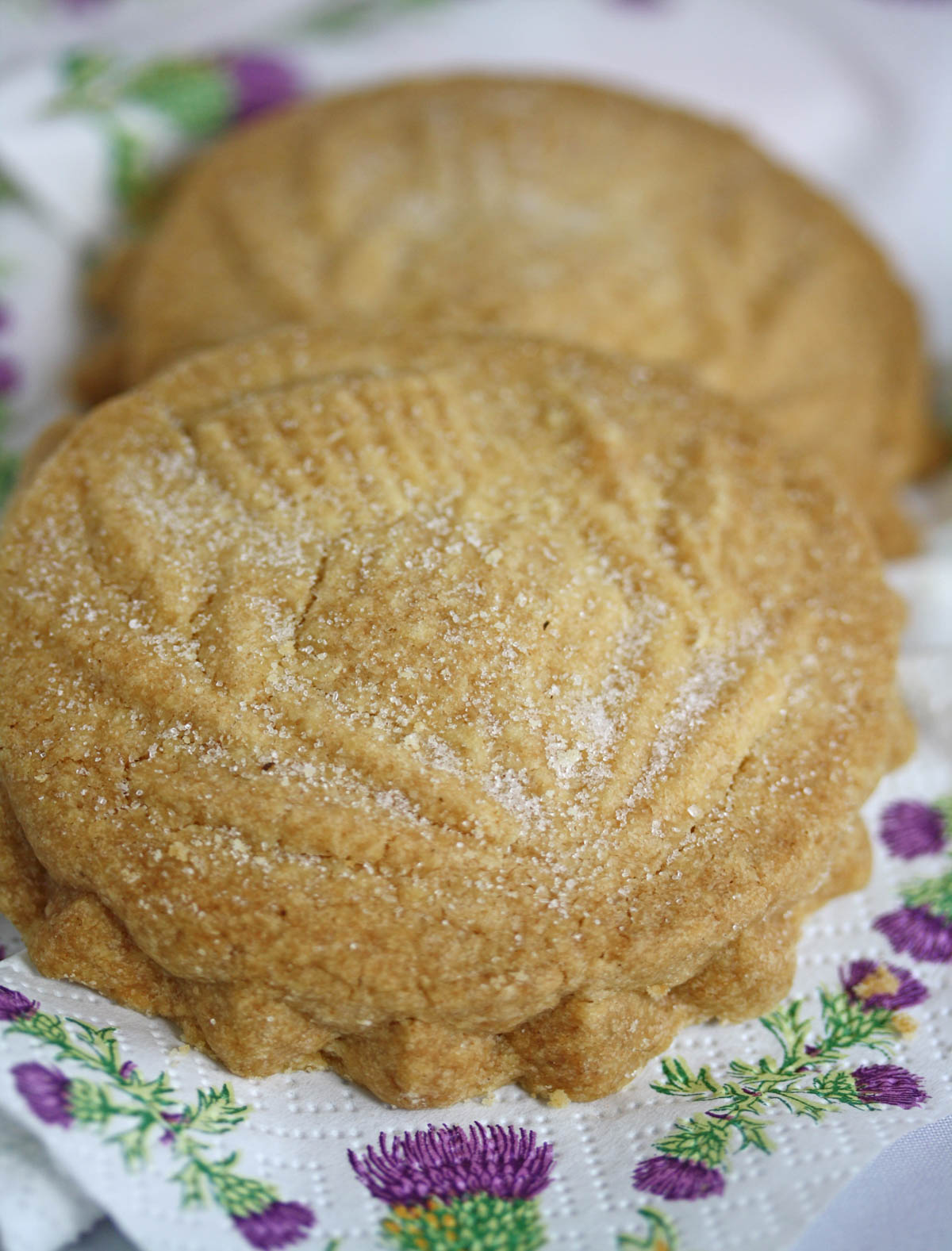
What is shortbread?
Shortbread is not like an American cookie, nor is it really a British biscuit though it is often referred to in shops as Scottish shortbread biscuits. With the amount of butter contained in traditional Scottish shortbread it is even more than a butter biscuit, it is in a class of its own.
Shortbread dates right back to the 12th century and the name shortbread refers to the fact that the amount of butter it contains means it is ‘short’ and crumbly, not long and stretchy like a bread or cake.
Shortbread shapes
Today I’m making simple, shortbread fingers which are easily made just in a small baking tray. However, you can buy moulds to make shortbread into classic and attractive shapes with thistles and other Scottish motifs carved into them.
There are lots of different types of shortbread in Scotland from the famous Petticoat Tails Shortbread which took its name from its classic shape like a lady’s petticoat a great many years ago to Ayrshire Shortbread which is made with cream from those famous Ayrshire cows.

Ingredients for proper Scottish shortbread
So what makes a good shortbread? The best quality ingredients! Any recipe that calls for just a few ingredients means you really must use the best quality ingredients to get the best taste as every one is playing a big part in the finished shortbread recipe.
Butter – I like to use unsalted butter in all my recipes and then add just a wee pinch of salt to my baking. This way YOU are in charge of the salt content as different brands of butter contain differing levels of salt. You want your butter to be well chilled for making shortbread.
Flour – you want plain flour (all-purpose flour in USA) for making homemade shortbread. This is not a cake recipe where you want rising agents to add lift, so you want plain flour to make shortbread.
Sugar – proper traditional Scottish shortbread does not contain a lot of sugar. This dates back centuries when sugar was seriously expensive.
What type of sugar do you use to make shortbread?
Simple white caster sugar that you’d use in any baking recipe. Do NOT use icing sugar/powdered sugar to make shortbread.
If you only have granulated sugar in the cupboard you can whizz it in your food processor for a moment to grind it down a bit and that turns it into caster sugar. Caster sugar is just a more finely milled version of granulated sugar.
The complete list of ingredients and full instructions for making this recipe can be found on the printable recipe card at the bottom of this post.
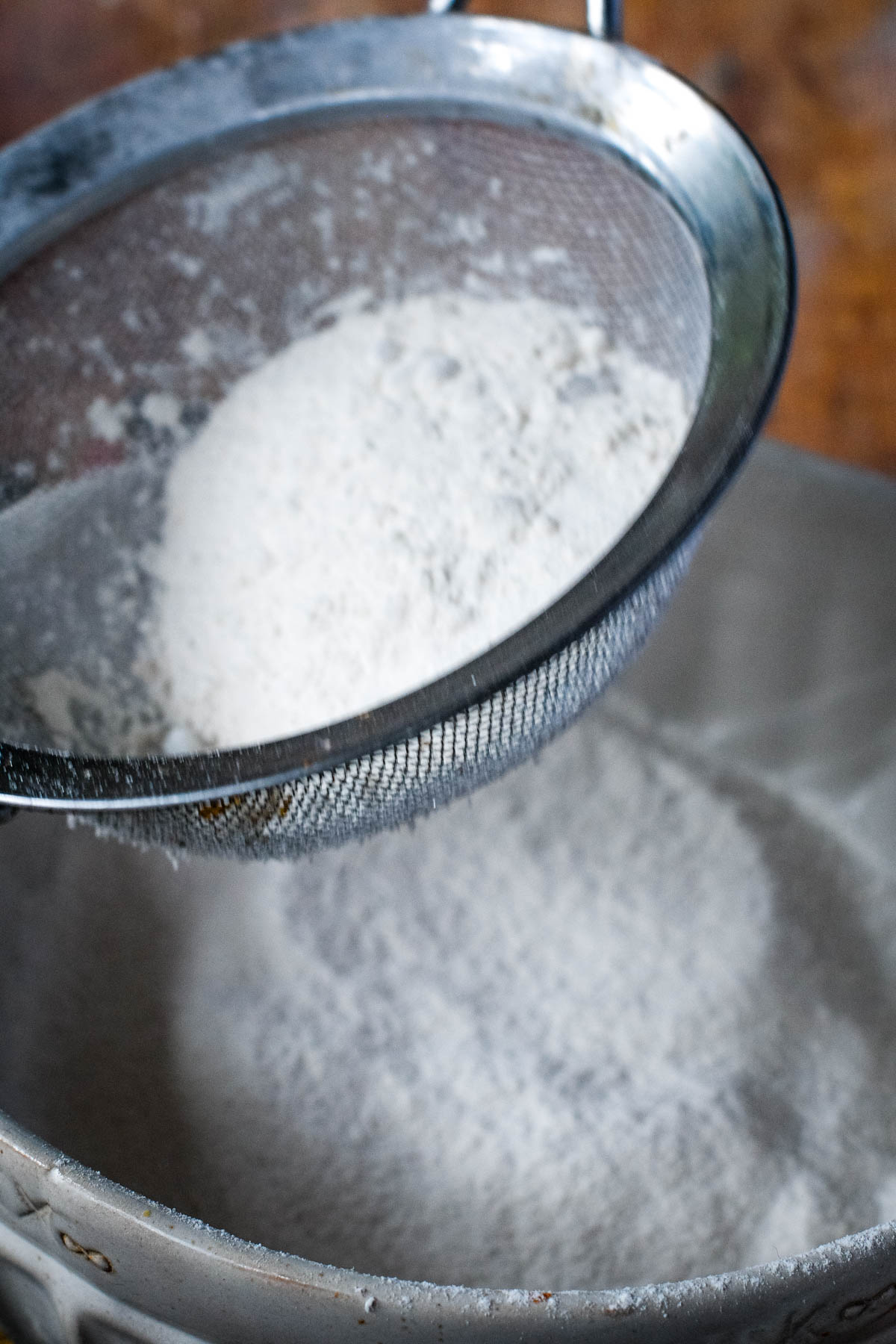
How to make Scottish shortbread
Shortbread is really easy to make it is just a case of mixing those ingredients together and baking them in the oven. But you want to take a bit of care and do that properly.
So here’s how to make shortbread the true Scottish way.
First measure out your ingredients using a scale. I prefer digital scales for their pinpoint accuracy. I keep getting comments here that although I have a conversion button in my recipe cards to transfer grams into ounces I don’t have anything for cups. That is because you cannot translate everything into cups with perfect accuracy and baking is all about numbers, in weights, temperatures and timings. So get some scales please they are very inexpensive and all your cooking, baking and preserving will improve.
Sieve the dry ingredients, that’s the flour and sugar with just a wee pinch of salt into a mixing bowl.
Why do you sieve the dry ingredients? This is to make sure there are no bits and pieces in there that shouldn’t be, to add a bit of lightness and air to the mix and also to ensure that all three ingredients are well combined right from the start.
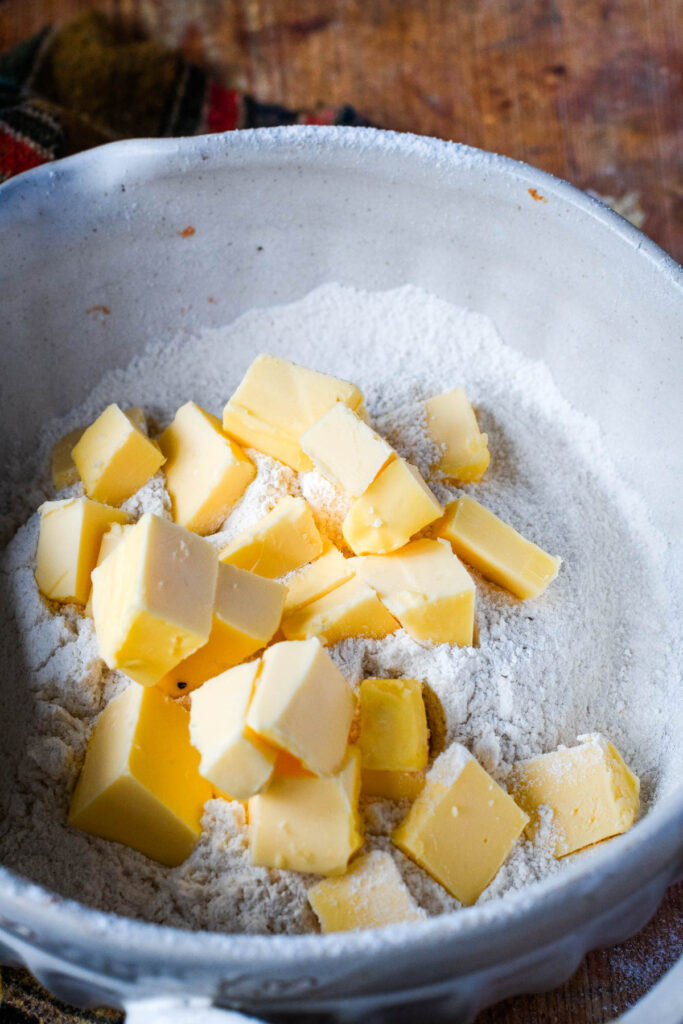
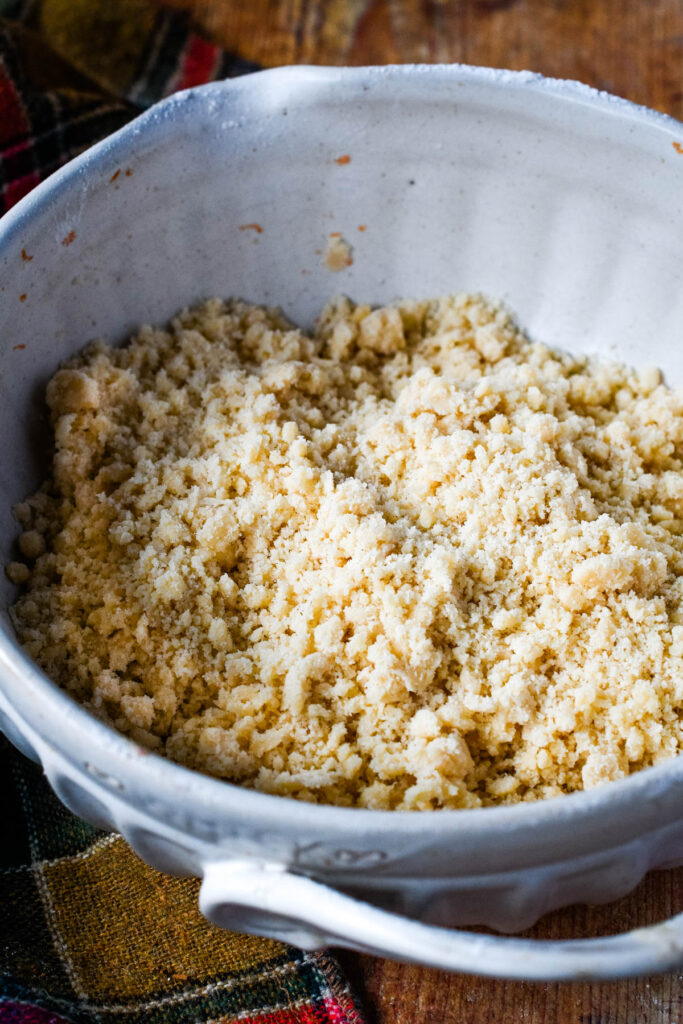
Now add the chilled and cubed butter to your mixing bowl with the sieved dry ingredients.
It’s time to get your hands in there and bring the shortbread dough together.
Do not use a wooden spoon, you are not mixing a cake batter here and creaming the butter in. Use your fingertips to rub the butter into the dry ingredients.
This rubbing-in coats all the flour proteins with a layer of fat. In other words it distributes the fat evenly throughout the mix creating a finer crumb to your shortbread and less gluten is formed.
You want to gently rub in the butter till you get a breadcrumb like texture.
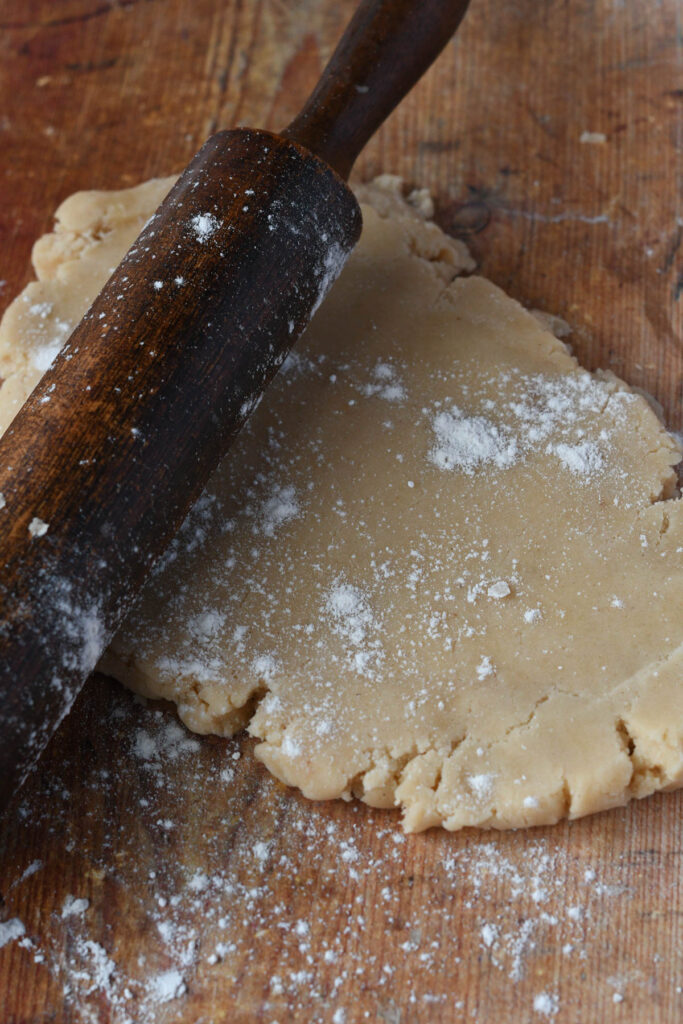

Once your shortbread mixture is ready press it together to form a dough and lightly roll out of a floured surface to about 1/2″ (1.5cm) thick for classic shortbread fingers.
Now lift the dough and press into your baking tin trying to keep it as even as possible.
Of course, you can miss out the rolling stage ad just press the dough straight into the tin but by rolling you will get a more even thickness and your shortbread will cook more evenly.
Using a knife lightly score the shortbread dough into the fingers (I got 6 shortbread fingers from this recipe) and prick along the tops of the fingers with a fork.
This is to stop the shortbread from rising unevenly and is a traditional marking for shortbread fingers.
Put your tray of shortbread into the fridge to chill and rest for half an hour. Now you can chill out with a cuppa while you wait.
Can you make shortbread in a food processor?
Yes you can but quite honestly I don’t think it is half as good. You will have to pulse the dough to make sure that you don’t overwork it.
There is something rather relaxing and therapeutic about rubbing in the butter by hand and it only takes a few minutes.

Bake your shortbread in a low/moderate oven for about 35 minutes till it is just turning very slightly golden. You do not want to overbake shortbread looking for a browned golden colour.
Your shortbread will firm up as you allow it to cool while it is still in the baking tin. You can go in with a knife now and lightly press on the lines between each finger that you made before baking the shortbread.
Finally, sprinkle your shortbread with a little granulated sugar for extra sweetness and crunch and you’re done.
What is the most common mistake when making shortbread?
Overworking the dough makes for tough shortbread, that, and using too much flour. Also, do not overbake your shortbread!
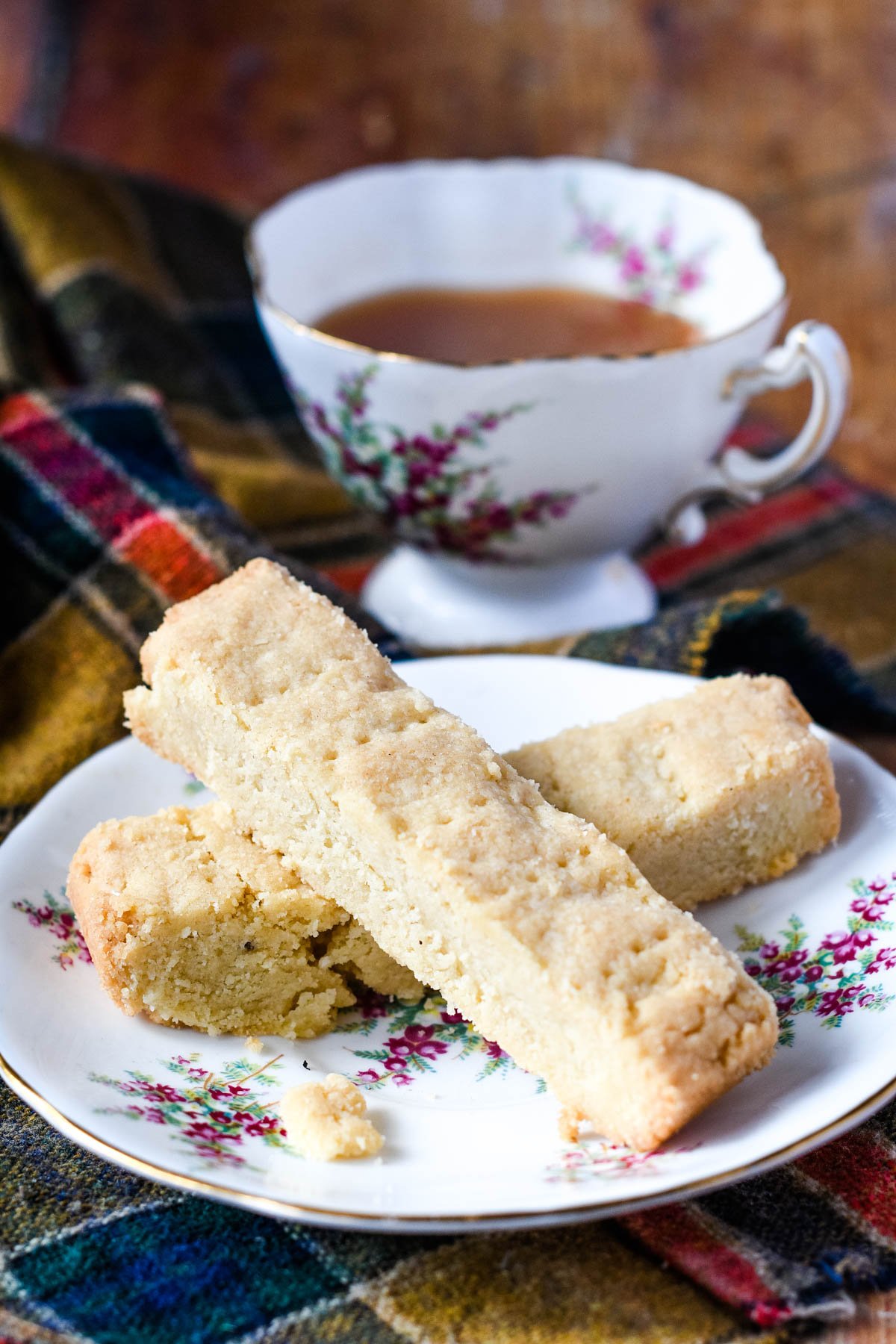
How long does shortbread keep?
Your homemade shortbread will stay fresh in a tin or airtight box for up to 4 weeks.
How to serve shortbread
Shortbread goes really well with a classic cup of tea or coffee if that is your preference. Shortbread was one of the original ‘fancies’ provided in the tea shops of Edinburgh.
You can also serve shortbread alongside a wee dram of whisky. This is a tradition here in Scotland especially at Hogmanay (New Year’s Eve) and on Burn’s Night.

Looking for more shortbread recipes to try? Then check these out before you go;
Orange glazed shortbread with caraway seeds
Millionaires shortbread (caramel shortbread)
Savoury cheesy shortbread bites
Valentine’s white chocolate shortbread
Finally, if you do try this recipe don’t forget to leave a comment/star rating below as I just love to hear from readers. Want more Larder Love? Then follow me on Instagram, Facebook, Pinterest and Twitter and sign up for my newsletter too of course.
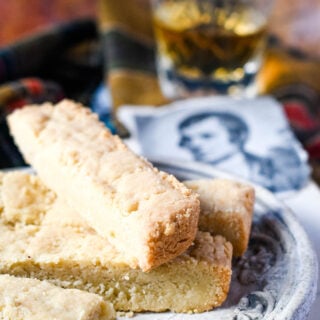
Easy Traditional Scottish shortbread
Ingredients
- 175 g plain flour
- 60 g caster sugar
- 115 g butter chilled
- 1 pinch salt
Instructions
- preheat oven to 170C and grease a small baking tray
- Sieve the dry ingredients into a mixing bowl
- Add the chilled butter cut into cubes and rub in with your fingertips till you have a breadcrumb-like mix
- Lightly roll out to approximately 1/2" (1.5cm) and press lightly into the prepared baking tin and score into fingers with a knife then press lightly with a fork all over
- Bake for 35 minutes till it is only just turning lightly golden. Allow to cool in tin
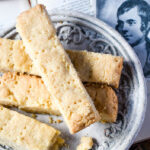

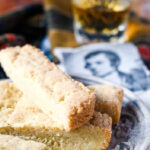


This was a wonderfully quick, but delicious recipe. Easy to follow. Although I have castor sugar it was a good tip on how to make it (if you’re not in Europe!) this is also a quick toss together if you have a friend for tea!
Hi Julie
So glad you liked my recipe so much and glad you found my caster sugar tip helpful.
K
Delicious! My hubby says that home made shortbread is one of the toughest things to crack, that and fudge… he said this was the best he’d had. I made one and half times recipe to fill my rather large tin.. he’s a happy man !!
Hi Sue
Thrilled to hear your hubby likes this shortbread recipe so much, thanks for letting me know.
K
What size baking pan did you use for this quantity ingredients? Thank you
Hi Pam
As I say in the post you want the dough to be about 1/2″/1.5cm thick so it depends what shape pan you are using to bake it in.
K
That’s really helpful – I’ve made each of your identified mistakes but will now know better ( especially to use chilled butter!
Hi Sheila
Glad you found my tips useful
K